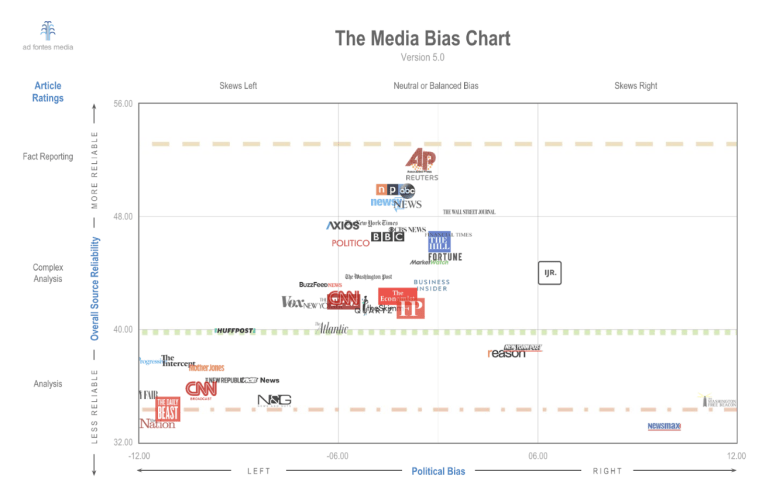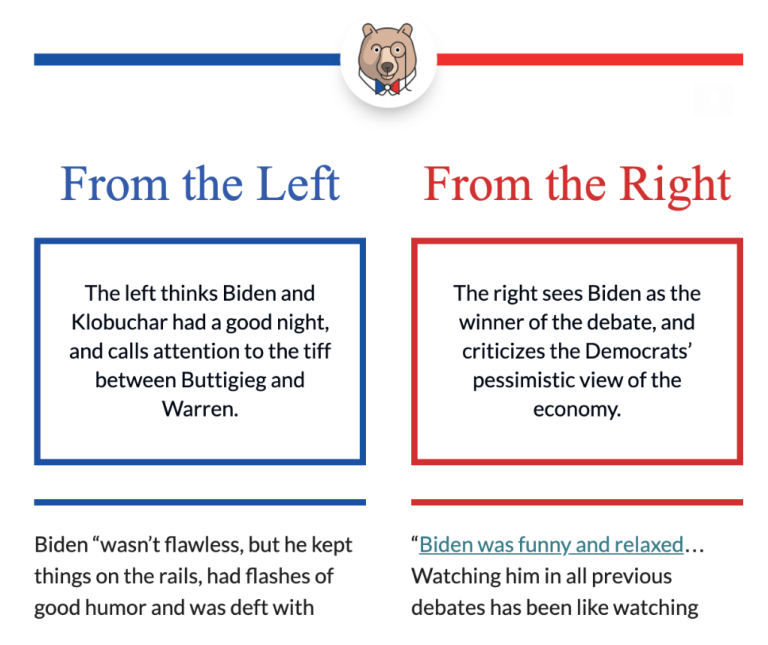 The following was written by guest blogger Jake Sandler and does not necessarily reflect the views of The Washington Outsider or its staff. A version of this post originally appeared on ChangeRoots under the title “4 Ways to Detect Media Bias and Step Out of the Partisan Bubble.” After pursuing a career in business, Jake Sandler founded ChangeRoots to incentivize post-partisan integrity in politics. The unfortunate reality is that - right now - politicians are incentivized to act in the interests of whoever donates the most to their campaigns. We can change that using the power of behavioral science, which teaches us feedback is most effective when it is specific, immediate and consequential. Throw those into a pot, layer in some social media and viola, you got some ChangeRoots. Visit ChangeRoots at ChangeRoots.com. Our overall trust in the media has hit an all-time low. It can be difficult to find quality news sources that expose readers to multiple perspectives on an issue. Worries about accuracy and bias increase our mistrust while the sheer volume of content available today can be debilitating when searching for differing. yet credible, opinions. The good news is that recent research suggests trust in the media is not permanently broken. It can be restored. Researchers have also found that the effects of media echo chambers, the notion that things like Facebook and search engine algorithms limit our exposure to other views outside of our own interests and preferences, have been exaggerated. Since our mission at ChangeRoots is to end toxic partisanship, we spend a lot of time studying how media increases polarization through biased writing. We use what we learn to provide post-partisan context to political news for our users. Here are some useful tips and resources that can help readers recognize media bias. 1. Read about the same topic from different political perspectives with Allsides.com. Allsides is a great resource to help people step outside their partisan bubbles. Their website publishes articles on the same topic from publications across the political spectrum. They use a rigorous method to rate publicans on a left to right spectrum. Their weekly newsletter does a roundup of stories with snippets from Left, Right and Center reporting on the same topics. Check them out and sign up for their newsletter here. Review the methodology they use in assigning ratings here. 2. See the bias and reliability of media organizations with Ad Fontes’ Media Bias Chart. Ad Fontes analyzes news content using a rigorous, non-partisan methodology to rank news for overall reliability and bias. The chart is a bit clunky to navigate at first, but once you stare and click around for a few minutes it becomes a fascinating and insightful resource. M y favorite part (nerd alert) is that they have developed a way to score news organizations on their level of reliability in addition to bias. See their interactive chart here. Review the methodology they use in assigning ratings here. 3. Get an email with snippets from the Left and Right each day with The Flip Side. Their website says it is the best way to “see the whole political picture with the points from both sides in one easy 5-minute email a day.” They feature one topic per day and pull quotes from various media sources on from the Left and Right to give you a quick way to see how each side is framing the issue. I like how they limit it to one topic a day, but give you five or more snippets from each side on that one topic. This gives you a wider variety of perspectives from both the conservative and progressive worlds. Sign up here. 4. Guide to Spotting Media Bias by Allsides.
Allsides (mentioned above) has compiled an excellent and detailed guide on the nuance of how to spot bias in the media. It breaks down the difference between spin, presenting opinions as fact, sensationalism , and much more. The guide is long, but it has great examples of highlighting different elements of bias within actual articles. If you do not want to read the entire document, I recommend skimming the examples they include throughout the guide. The guide can be found here.
Comments
|
Read old posts
April 2020
|





 RSS Feed
RSS Feed
